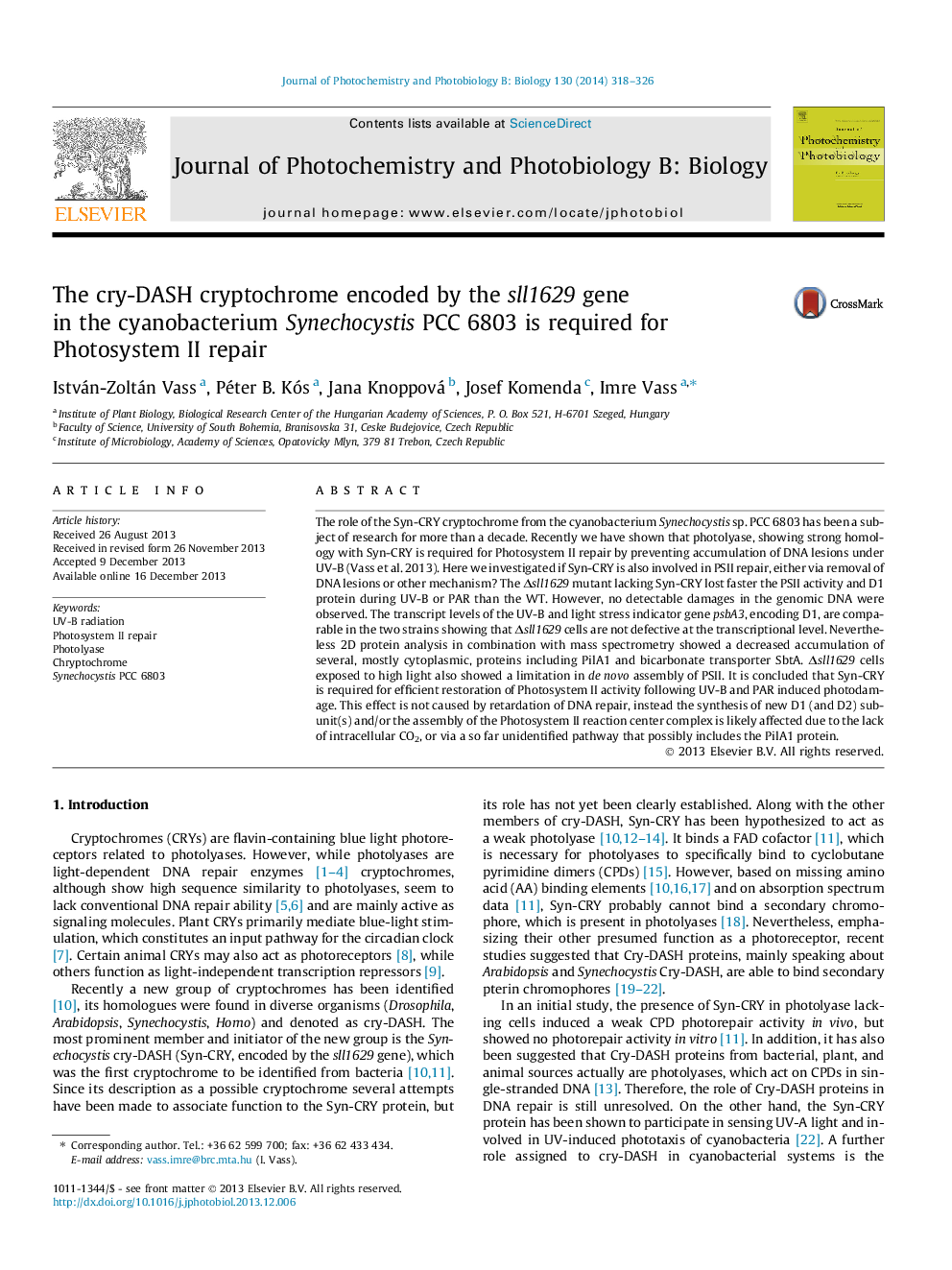| کد مقاله | کد نشریه | سال انتشار | مقاله انگلیسی | نسخه تمام متن |
|---|---|---|---|---|
| 30454 | 44478 | 2014 | 9 صفحه PDF | دانلود رایگان |

• Syn-CRY does not repair UV-induced damages of genomic DNA in Synechocystis 6803.
• Lack of Syn-CRY cryptochrome in Synechocystis 6803 (sll1629) retards PSII repair.
• The lack of Syn-CRY decreases the level of CO2 transporters and the PilA1 protein.
• Syn-CRY may affect PSII repair via regulating CO2 transport or the PilA1 protein.
The role of the Syn-CRY cryptochrome from the cyanobacterium Synechocystis sp. PCC 6803 has been a subject of research for more than a decade. Recently we have shown that photolyase, showing strong homology with Syn-CRY is required for Photosystem II repair by preventing accumulation of DNA lesions under UV-B (Vass et al. 2013). Here we investigated if Syn-CRY is also involved in PSII repair, either via removal of DNA lesions or other mechanism? The Δsll1629 mutant lacking Syn-CRY lost faster the PSII activity and D1 protein during UV-B or PAR than the WT. However, no detectable damages in the genomic DNA were observed. The transcript levels of the UV-B and light stress indicator gene psbA3, encoding D1, are comparable in the two strains showing that Δsll1629 cells are not defective at the transcriptional level. Nevertheless 2D protein analysis in combination with mass spectrometry showed a decreased accumulation of several, mostly cytoplasmic, proteins including PilA1 and bicarbonate transporter SbtA. Δsll1629 cells exposed to high light also showed a limitation in de novo assembly of PSII. It is concluded that Syn-CRY is required for efficient restoration of Photosystem II activity following UV-B and PAR induced photodamage. This effect is not caused by retardation of DNA repair, instead the synthesis of new D1 (and D2) subunit(s) and/or the assembly of the Photosystem II reaction center complex is likely affected due to the lack of intracellular CO2, or via a so far unidentified pathway that possibly includes the PilA1 protein.
Figure optionsDownload as PowerPoint slide
Journal: Journal of Photochemistry and Photobiology B: Biology - Volume 130, 5 January 2014, Pages 318–326